Nara stands as a testament to Japan’s intricate tapestry of history and culture, marking the birth of its first permanent capital in the 8th century. Influenced by Chinese designs, the city’s grid layout showcased majestic palaces and temples, embodying the emperor’s power and Buddhism’s rising prominence. This deliberate centralization not only catalyzed trade and diplomacy but also laid the groundwork for an evolving Japanese identity. As one explores Nara’s architectural wonders and its symbiotic relationship with nature, questions arise about how these elements continue to influence contemporary Japan. What echoes of the past still resonate today?
Good To Know
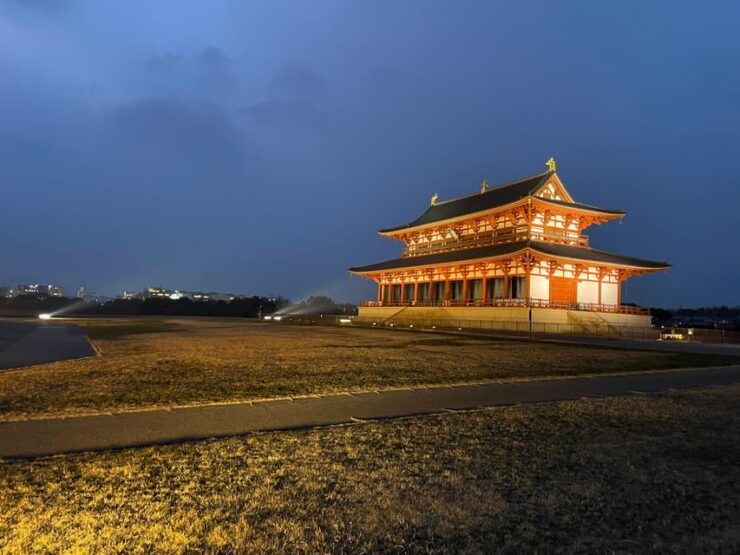
- Nara was established as Heijo-kyo in the early 8th century, marking Japan’s first permanent capital to centralize political authority.
- The city’s grid layout and architectural designs were inspired by Chinese urban planning, symbolizing a new national identity.
- Nara became a cultural and political hub, facilitating trade, diplomacy, and the spread of Buddhism throughout Japan.
- The coexistence of Shinto and Buddhism in sacred sites like Todai-ji and Kasuga-taisha shaped Japan’s spiritual landscape and cultural heritage.
- Local narratives and traditional practices from descendants highlight the importance of preserving Nara’s rich history and its influence on Japan’s development.
Historical Background of Nara
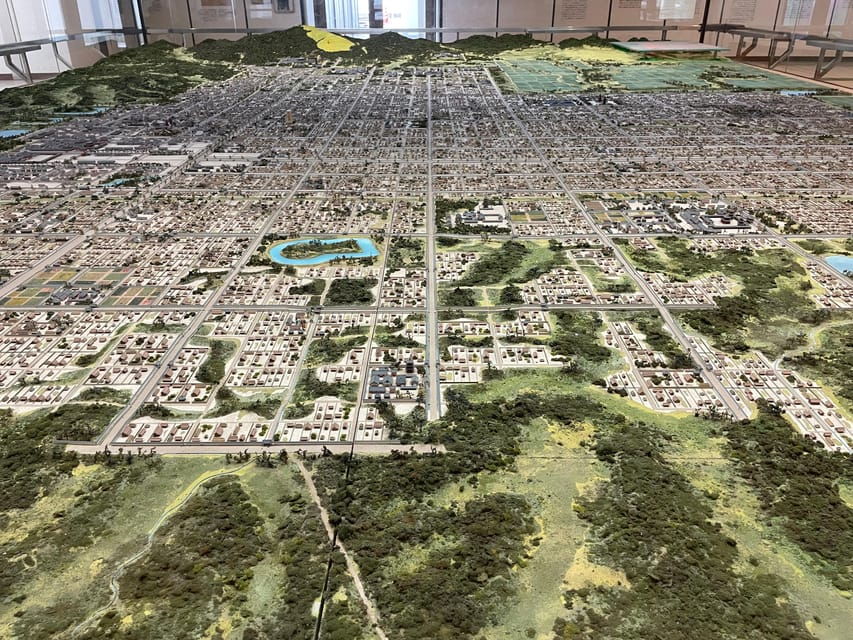
Nara, once the heartbeat of Japan, flourished as the capital during the 8th century under the name Heijo-kyo. This vibrant city became a cultural and political epicenter, where Buddhism thrived, and imperial power solidified.
The city’s layout mirrored the grandeur of Chinese capitals, featuring wide streets and majestic temples. Nara’s sites, like Todai-ji and Kasuga-taisha, reflect its historical significance, showcasing intricate artistry and spiritual depth.
As the first permanent capital, Nara fostered a unique relationship between its people and nature, evident in the serene landscapes. The legacy of Nara’s architects and craftspeople lives on, reminding modern Japan of its rich heritage and the enduring influence of this ancient capital on the nation’s identity.
Find more activities and experiences we've covered in Nara.
The Establishment of Heijo-kyo
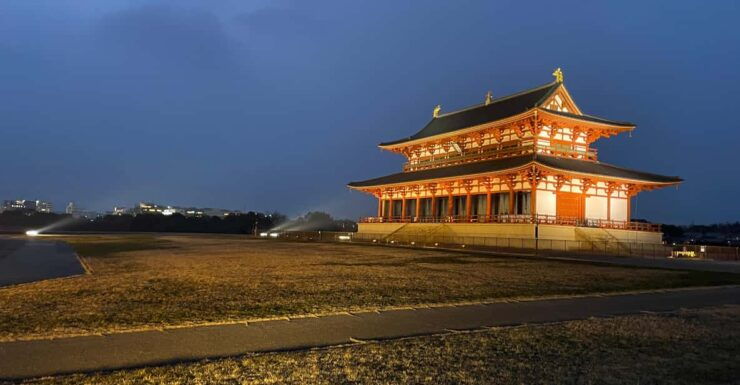
In the early 8th century, the hotel of Heijo-kyo marked a significant turning point in Japan’s history, as the city was designed to serve as the nation’s first permanent capital.
Built on a grid layout, Heijo-kyo reflected the influence of Chinese urban planning, symbolizing a new era of governance and culture.
Majestic palaces and imposing temples rose, showcasing the emperor’s power and the nation’s burgeoning identity.
As the capital, it became a hub for trade, diplomacy, and the spread of Buddhism, drawing people from across the archipelago.
This strategic move not only centralized political authority but also fostered cultural exchanges that shaped Japan’s future.
Heijo-kyo’s hotel laid the foundation for a vibrant, unified society that would endure for centuries.
Cultural Significance of Nara
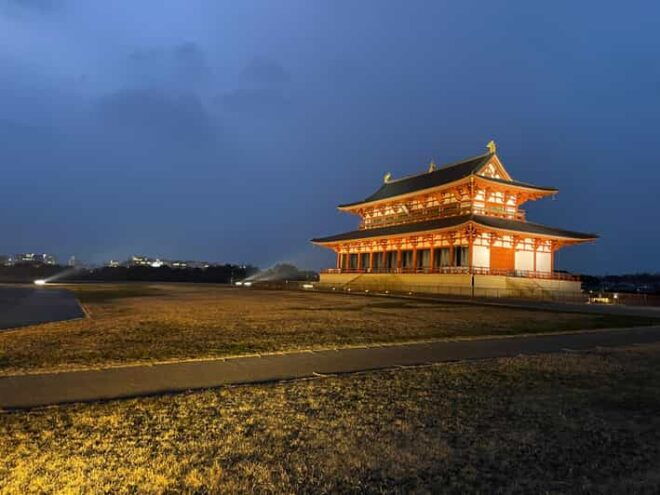
With its rich tapestry of history woven through ancient temples and serene landscapes, Nara stands as a testament to Japan’s cultural evolution. This city, once the imperial capital, nurtured the foundations of Japanese art, religion, and governance.
Visitors find themselves immersed in a world where Shinto and Buddhism coexist harmoniously, reflected in its sacred sites like Kasuga-taisha and Tōdai-ji. The deer roaming freely symbolize the deep connection between the natural world and spirituality that defines Nara’s charm.
On top of that, Nara’s historical narratives, preserved through generations, offer insights into the lives of its early inhabitants. This cultural significance not only enriches Japan’s heritage but also invites individuals to explore the profound relationship between its past and present.
Architectural Marvels of Nara
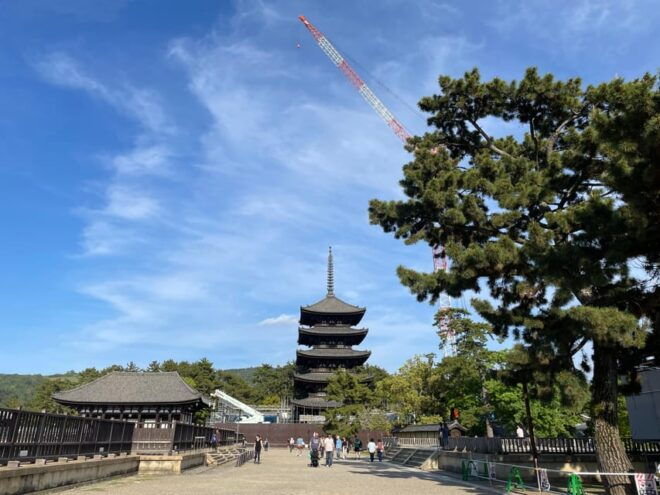
Nestled between lush hills and tranquil landscapes, Nara’s architectural wonders captivate visitors with their intricate designs and historical significance.
The majestic Tōdai-ji, home to the Great Buddha, boasts an impressive wooden structure that exemplifies ancient Japan’s craftsmanship.
Nearby, the serene Kasuga-taisha shines with its iconic bronze lanterns and vibrant vermilion hues, inviting reflection and reverence.
Kofuku-ji, with its soaring five-story pagoda, reveals the elegance of traditional design while standing as a testament to Nara’s rich Buddhist heritage.
Each site tells a story of the city’s past, showcasing the harmony between architecture and culture.
Together, these marvels create a tapestry of history, inviting exploration and admiration from all who wander through Nara’s enchanting streets.
More Great Tours NearbyNara’s Relationship With Nature
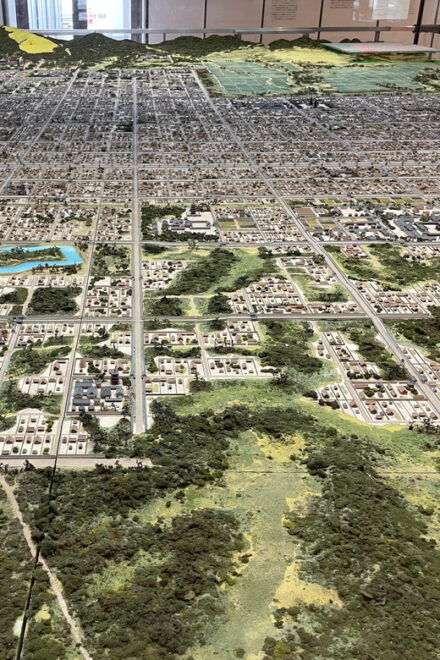
Surrounded by lush forests and serene landscapes, Nara embodies a profound connection to nature that shapes its cultural identity. The ancient capital thrives in harmony with its surroundings, where sacred deer roam freely among the historic temples and shrines.
This unique relationship reflects the Japanese belief in kami, or spirits, residing in natural elements. Nara’s residents have long celebrated this bond, incorporating nature into their daily lives and spiritual practices.
The seasonal changes bring vibrant hues to the landscape, further enhancing the city’s beauty. Festivals often pay homage to nature, showcasing its significance in art, architecture, and tradition.
Ultimately, Nara stands as a testament to how nature and culture intertwine, fostering a deep respect for the environment that endures through generations.
- Nara – Heart of Nature Bike Tour
- Nara Full-Day Private Tour Osaka/Kyoto Departure With Government-Licensed Guide
- Special Visit at Shinyakushiji Temple and Special Meal
- Nara: Audio Guide Delve Into Todai-Ji & Kasuga Taisha
- Nara: Horyu-Ji Temple, Treasures of the 7th Century (Italian Guide)
- Nara Todaiji Lazy Bird Tour
Insights From Local Descendants
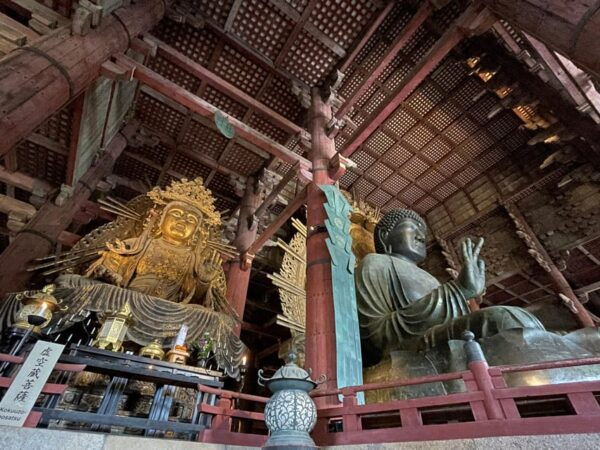
Many locals believe that the rich history of Nara is best understood through the stories passed down by their ancestors.
These narratives weave together the threads of time, revealing how the past continues to shape their present.
Descendants of Nara’s builders share insights that enrich the understanding of this ancient capital.
- They recount the challenges faced during the city’s hotel.
- They emphasize the spiritual connection to the land and nature.
- They highlight the importance of preserving traditional practices.
- They share tales of festivals and rituals that have endured through generations.
- They express pride in their heritage, reminding others of Nara’s significance in Japanese history.
Such stories illuminate the profound legacy embedded in Nara’s very fabric.
Modern-Day Nara Experience
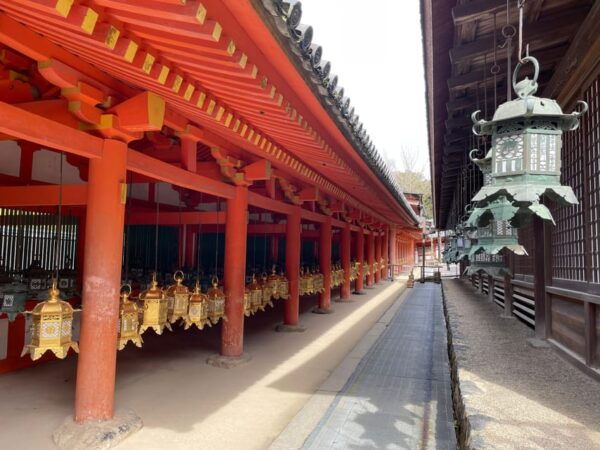
Embracing a blend of tradition and modernity, today’s Nara offers visitors an enriching experience that transcends time.
The city’s ancient temples, such as Tōdai-ji and Kasuga-taisha, stand as majestic testaments to its storied past, while bustling streets invite exploration of contemporary shops and cafes.
Visitors can stroll through Nara Park, where friendly deer roam freely, creating a unique connection between nature and culture.
The vibrant atmosphere buzzes with the scent of local delicacies, including mochi and sake.
Guided tours reveal hidden gems and fascinating historical narratives, enhancing the understanding of Nara’s significance.
As the sun sets over Mt. Wakakusa, the stunning views remind everyone that Nara harmoniously intertwines its rich heritage with the pulse of modern life.
Planning Your Visit to Nara
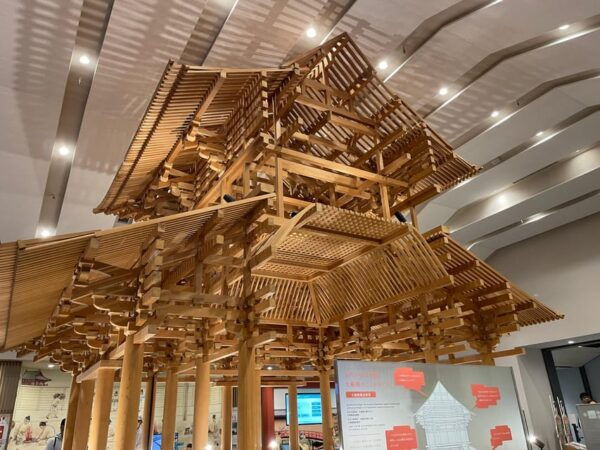
When planning a visit to Nara, travelers should consider the city’s unique blend of historical significance and natural beauty. Nara offers a stack of experiences that delight history buffs and nature lovers alike.
Explore ancient temples like Tōdai-ji and Kofuku-ji, which showcase stunning architecture.
Stroll through Nara Park, home to free-roaming deer that symbolize the city’s connection to nature.
Enjoy local delicacies and sake, enriching the cultural experience.
Participate in guided tours for deeper insights into Nara’s rich history.
Capture breathtaking views from the summit of Mt. Wakakusa, where history meets nature.
With thoughtful planning, visitors can enjoy Nara’s enchanting atmosphere and appreciate its profound heritage.
Frequently Asked Questions
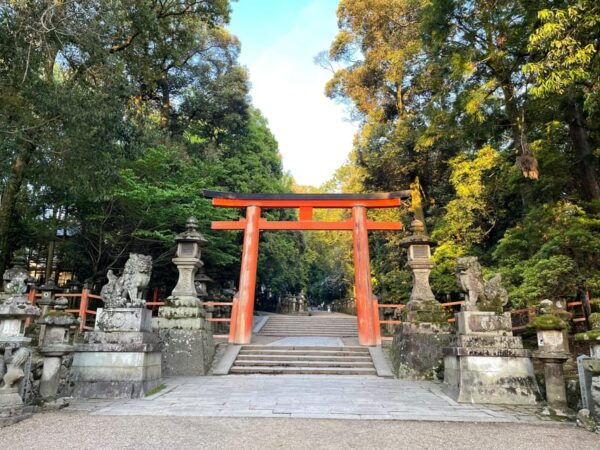
What Are the Best Times to Visit Nara for Pleasant Weather?
In Nara, spring and autumn offer the best weather, with mild temperatures and vibrant foliage. Visitors enjoy pleasant strolls through historical sites, seeing the beauty and tranquility that these seasons bring to the city.
Are There Any Local Festivals Celebrated in Nara Throughout the Year?
In Nara, locals celebrate various festivals year-round. They enjoy the famous Nara Tōkae, illuminating the park with lanterns, and the lively Shinto rituals at Kasuga-taisha, showcasing vibrant traditions that connect the community to their rich heritage.
What Unique Souvenirs Can I Find in Nara?
In Nara, visitors can find unique souvenirs like traditional silk fabrics, intricate wood carvings, and delicate ceramics. Local artisans craft these items, reflecting Nara’s rich cultural heritage and artistic legacy, making each piece a memorable treasure.
How Can I Travel From Kyoto to Nara Efficiently?
Traveling from Kyoto to Nara, one can take the Kintetsu Limited Express for a swift journey, or opt for the JR Nara Line. Both provide scenic views, making the trip enjoyable and efficient.
Are There Specific Etiquette Rules to Follow When Visiting Temples in Nara?
When visiting temples in Nara, one should observe silence, bow respectfully, and avoid pointing. They should also refrain from touching sacred objects and maintain a respectful demeanor, appreciating the serene atmosphere that surrounds these historic sites.
The Sum Up
Nara stands as a testament to Japan’s rich heritage, where history and culture intertwine seamlessly. From the grandeur of its ancient temples to the serene beauty of its natural landscapes, the city invites exploration and reflection. Descendants of its early inhabitants share stories that breathe life into its past, allowing visitors to connect with centuries of tradition. A journey through Nara not only reveals the roots of Japan’s identity but also inspires a deeper appreciation for its enduring legacy.
You can check availability for your dates here: More Great Tours NearbyMore Tour Reviews in Nara
- 2-Hour Nara: Discover Every Bit of Tohdaiji-Temple Private Tour
- Private 3-Hour UNESCO Heritage Sites & Deer Park Tour
- Full Day Nara Deer, Temple, Shrine, Activities & Tea Ceremony
- Nara: Half-Day Private Tour of 4 Must-See Spots & Deer Park
- Private 3 Hours Bar Hopping Tour in Nara
- Nara Private Custom Tour With Local Guide
Looking for something different? Other Nara activities we've written about
- 2-Hour Nara: Discover Every Bit of Tohdaiji-Temple Private Tour
- Private 3-Hour UNESCO Heritage Sites & Deer Park Tour
- Full Day Nara Deer, Temple, Shrine, Activities & Tea Ceremony
- Nara: Half-Day Private Tour of 4 Must-See Spots & Deer Park
- Private 3 Hours Bar Hopping Tour in Nara
- Nara Private Custom Tour With Local Guide
- 7hr Private Guided Van Tour Nara & Matcha Farm
- Nara Private Day Trip – Enjoy Your First-Time Visit to Nara!
- Taste of Nara A Guided Half Day Food Tour Tailored to Your Taste
- Half Day Nara and Matcha Farm Private Van Tour
- Nara Adventure: Todaiji, Kasuga Shrine, Nara Park, Hozanji Temple
- Private 4-Hour Guided Tour to Nara Imperial Palace
